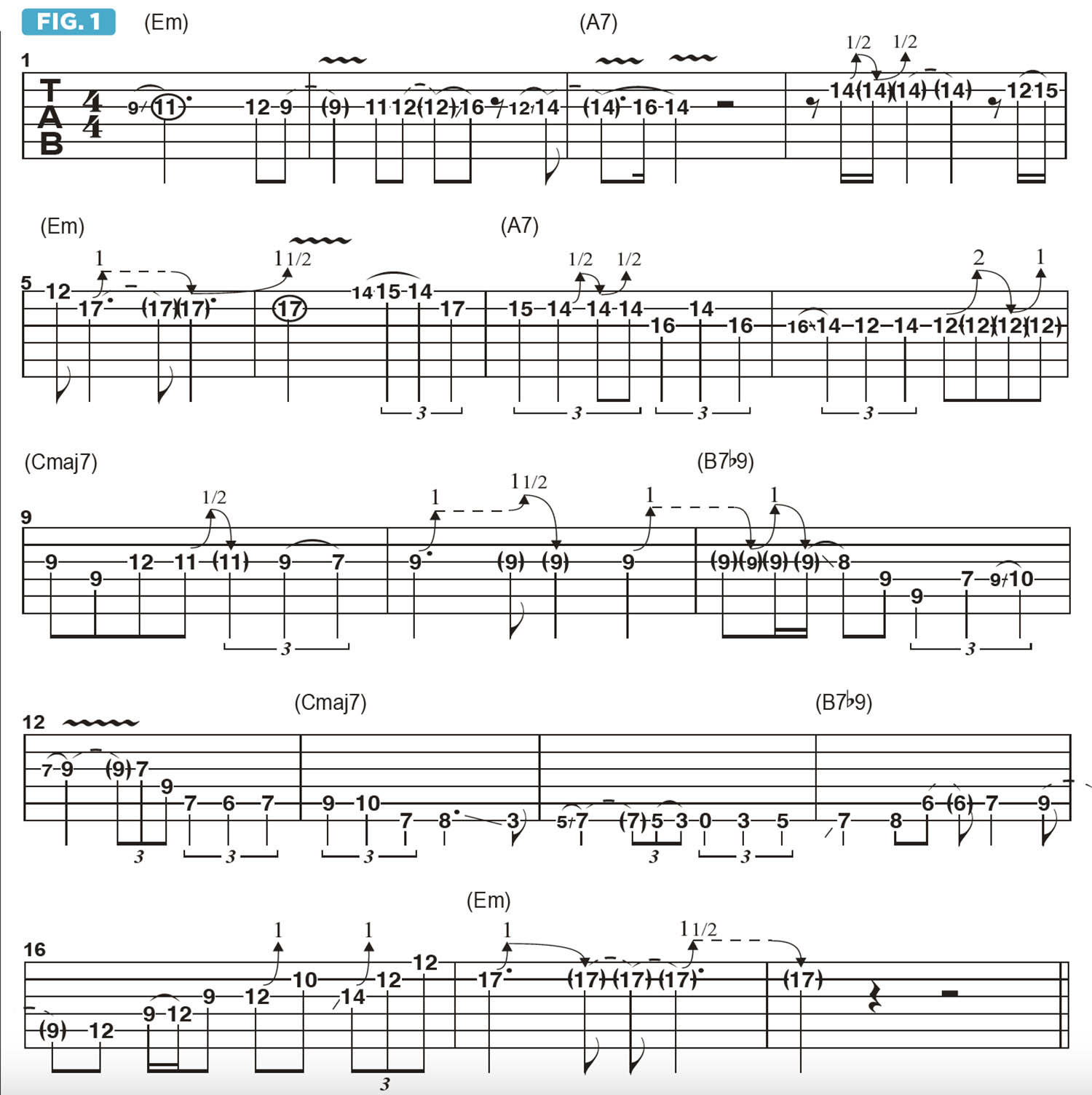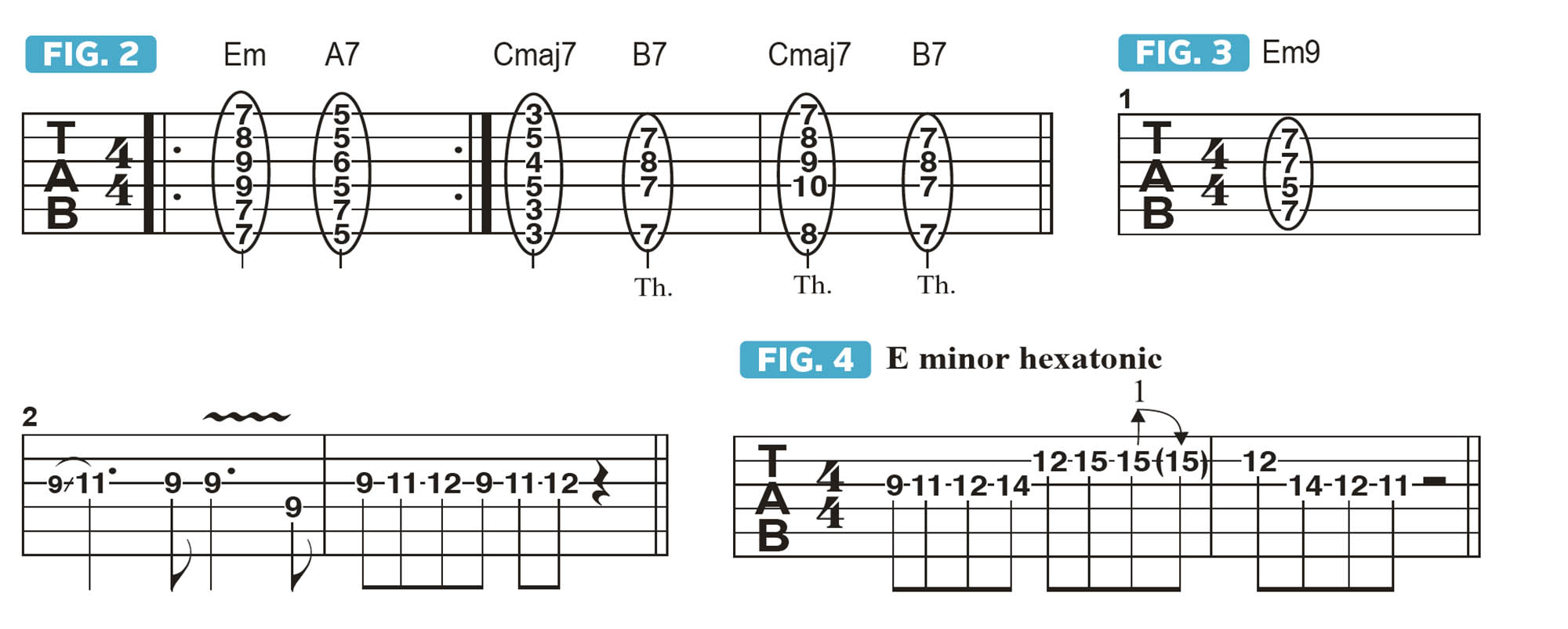Using a voice-leading approach is a surefire way to make your guitar solos more melodic – Andy Timmons, a master of the craft, shows you how
Andy Timmons shares a roadmap for soloing over chord changes and making your leads count

My approach for guitar solos, whether for recordings or live performances, encompasses various strategies. I try not to think too much about what the approach will be at any given moment. Instead, I prefer to listen and react as naturally and instinctively as possible.
That said, I’m aware of the “tools in the box” and it can be fun to focus on a specific approach in a conscious way. Let’s consider a voice-leading approach for soloing over a blues-rooted chord progression.
The voice-leading approach targets chord tones that move up or down. I prefer to mingle this approach naturally with the blues approach, but there is a raised awareness of the direction of the lines and how those targeted chord tones are set up.
Figure 1 offers a 16-bar solo improvised over the chord progression Em - A7 - Em - A7 - Cmaj7 - B7b9 - Cmaj7 - B7b9, with each chord played for two bars, followed by a return to the tonic, Em. These chords and their voicings are shown in Figure 2.
Figure 1 begins over the initial two bars of Em, and I start off by sounding the major 2nd, F#, followed by the minor 3rd, G and then the E tonic. In this way, the F# and G notes set up the root note. Figure 3 offers a closer look at this melodic movement.
Figure 4 illustrates E minor hexatonic (E, F#, G, A, B, D), which can be thought of a E minor pentatonic (E, G, A, B, D) with the addition of the major 2nd, F#.
In bar 3 of Figure 1, over A7, I hammer-on from A to B, the major 2nd of A, then pull-off back to A, followed in bar 4 with a half-step bend from C#, the major 3rd of A, to D, the suspended 4th.
All the latest guitar news, interviews, lessons, reviews, deals and more, direct to your inbox!
As you can see, I’m using the chord tones of Em (E, G, B) and A7 (A, C#, E, G) to melodically describe the chords. In bars 5 and 6, I take this idea of emphasizing the major 2nd and minor 3rd of Em to a new place via string-bending. In bars 7 and 8, over A7, I again emphasize C# and D but with quarter-note triplets.
Bars 9 and 10 are played over Cmaj7, and instead of targeting the C tonic, I prefer to lean on the E note, as it has a nice dual function: E is the major 3rd of Cmaj7 and also the root note of the key we’re in. So it pulls the improvised melody back to familiar territory.
When B7b9 arrives in bar 11, I bend the E note up a whole step to F#, which functions as the 5th of the B7b9 chord (B, D#, F#, A, C). I then release the bend and slide E down a half step to D#, which is the major 3rd of B. Through the next three bars of Cmaj7 to B7b9, I move freely between the B and C notes, blurring the line between the two chords.
In bars 17 and 18 of the example, the solo then wraps up back on Em, and I revise the emphasis on F# and G over E via more string bending.
Andy Timmons is a world-renowned guitarist known for his work with the Andy Timmons Band, as well as Danger Danger and Simon Phillips.



